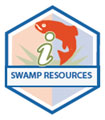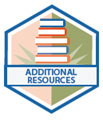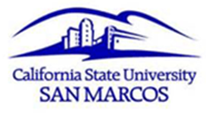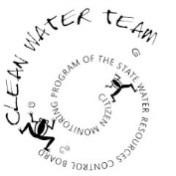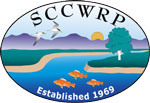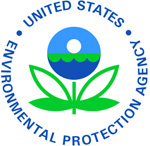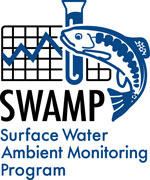
SWAMP IQ Monitoring Site Reconnaissance and Field Safety
About Reconnaissance and Field Safety
Preparation is the key to successful fieldwork. This includes appropriate site reconnaissance and field safety considerations. Preparing for field work is an important and valuable component of study design. Station reconnaissance can help save time for field crews trying to determine the location of a sampling station and ensure successful sampling events. Field work also requires an awareness of potential hazards and a knowledge of basic safety procedures. Field personnel routinely come in direct and indirect contact with waterborne pathogens, chemicals, and potentially hazardous plants and animals. The principles of safety are common sense and being aware of your surroundings. Advanced planning can eliminate many safety hazards or at least reduce them.
Site Reconnaissance
In researching a stations location your best resource can be those who may already know the watershed. Reach out to those who may have personal knowledge of the location. The following list is some of the organizations that would be worth contacting
- Army Corps
- BLM
- CDFW
- Cities
- Citizen Monitors
- County Assessor
- Fire Districts
- Flood Control
- Forest Service
- Irrigation Districts
- National Parks
- Police HQs
- Regional Parks
- RWQCB
- State Parks
- Tribal Councils
- USGS
- Utilities Realtors
- Water Purveyors
These organizations can help provide resources important to your reconnaissance such as maps, aerial photos, GIS Layers, Studies and Reports, History and old pictures, as well as further community contacts. SWAMP recommends that you use this information to create a site reconnaissance file also known as a “Site Dossier”, that can be provided to field crews.
Before field activities can begin, permission to access locations must be granted. An important consideration of station reconnaissance is to determine the type of land ownership your sampling site is on. Determine if your site is on private, tribal, state, or federal land. Based on the type of land ownership it is necessary to contact, and be granted permission from, the entity that controls access to that location. Federal Lands usually do not require permits except for National Park Service. State Parks and local parks usually do. Private and tribal properties always require permission.
It is critical to determine who to contact and what level of permission is necessary before beginning field activities. If your project requires access to private lands to have adequate representation of a watershed then ownership information will need to be found. The best resource for this is the County Assessor’s office. After permission has been granted a file can be compiled that contains safety and navigational information.
An example of the permission request letter is found in this link below:
Permission Request Letter Example
When planning reconnaissance trips to remote areas it is even more important to contact local entities and to have compiled useful information before departing. Local community members are a valuable resource when accessing remote locations. They can provide information about access points and trail conditions.
Depending on the scope of your sampling, aerial imagery or surveillance over the targeted watershed could be the most effective way of determining access to locations.
It is important to plan the timing of your reconnaissance trips. It is best to consider the time of year and the typical flow discharge of your sampling site when planning your trip. Be sure to plan your reconnaissance trip at a similar time to the time you will be conducting sampling in order to best match any conditions that will be found during that time.
SWAMP recommends developing a Watershed Folder and a Site Dossier to organize the information from your research. The following are ideas about what content can be kept in these files:
Watershed Folder Contents
- Maps of different scale
- Aerial Photos
- Conversation records
- Reconnaissance data sheet
- Stream Gauges information
- Specialized maps (AAA road maps, Topo maps, maps for other agencies and entities)
- Spreadsheet of candidate sites -Reference to existing data
Site Dossier Contents
- Site Maps showing access
- Permission letters if needed
- Conversation records
Health and Safety
It is important for personnel conducting any field activities for SWAMP to be well-versed in standard safety procedures. It is the responsibility of the QA officer, Safety Officer, Supervisor, or designee of the participating SWAMP entity conducting field activities to ensure that safety training is mandatory for all field personnel, and that such training is documented in training certifications/records maintained and updated for all participating SWAMP field staff.
SWAMP also recommends creating and maintaining a current Field Safety Manual (FSM) in compliance with the Occupational Safety and Health Administration (OSHA), or equivalent state or local regulations. The FSM can be readily available to field personnel, including all appropriate Material Safety Data Sheets (MSDS) information for chemicals that may need to be used while in the field.
Proper procedures for safe storage, handling, shipping, transport, and disposal of chemicals and other materials must be followed at all times in the field; each chemical or field sample should be treated as a potential health hazard and good field safety practices should be implemented accordingly.
For a more detailed description, please refer to the Recommended Minimum Safety Guidelines for SWAMP Field Activities linked below.
 SWAMP Resources
SWAMP Resources
- SWAMP Reconnaissance SOP
- Recommended Minimum Safety Guidelines for SWAMP Field Activities
- SWAMP Reconnaissance Field Data Sheet
- Office of Information Management and Analysis (OIMA) Helpdesk – SWAMP data templates and questions should be sent to the OIMA Helpdesk at: OIMA-Helpdesk@waterboards.ca.gov.
 Additional Resources
Additional Resources
U.S. Geological Survey - A Guide to Safe Field Operations
Occupational Safety and Health Administration
Centers for Disease Control and Prevention (CDC)
California Department of Public Health
Tick-Bourne Diseases - Reference information from CDC
West Nile Virus –Reference information from California Department of Public Health | UC Davis Arbovirus Research and Training | Mosquito and Vector Control Association of California
Poison Oak - Reference information from CDC
Snakes - Reference information from California Department of Fish and Wildlife
Glove Guide – Reference information from global provider of protection solutions Ansell
Heat Stress – Reference information from CDC
Cold Stress – Reference information from CDC
 Contact Us
Contact Us
For questions regarding SWAMP Site Reconnaissance, please contact:
SWAMP Site Reconnaissance
Let us know how we can improve our webpage.
Please send comments and suggestions to the Office of Information Management and Analysis Help Desk: OIMA-Helpdesk@waterboards.ca.gov
Are you a SWAMP member? Click here for internal SWAMP IQ Center resources

